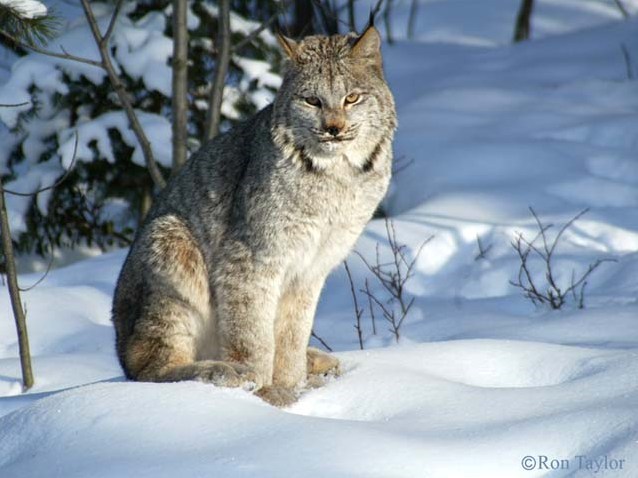When we compare how animals and humans cope with the harsh Canadian winter, we often find more similarities than differences in the way we dress and behave. Humans have long drawn inspiration from nature’s wisdom, and applied this knowledge to engineering tools, building shelters and developing strategies to survive in some of the most hostile cold weather environments.
So just how do our wildlife counterparts make it through winter using just their natural instincts and biological adaptations? Here are three of Canada’s iconic species with a few tricks up their sleeves (or rather, fur)!
Padded paws – Canada lynx (Lynx canadensis)
The Canada lynx is one of Canada’s big cats. The main distinction from the bobcat is the lynx’s thick grey fur, longer ear tufts and black-tipped tail. Despite their size, with males weighing up to 17 kilograms, Canada lynxes have no problem trekking on deep snow thanks to their large furred paws that act like snowshoes. This feature makes them well adapted for stalking and ambushing prey (like the snowshoe hare).
Grow a coat, and more – the moose (Alces alces)
The majestic moose (which comes from the Algonquian First Nations “moosh” meaning stripper and eater of bark) is the largest member of the deer family. Several key adaptations help to keep the 450-kilogram (on average) vegetarian comfy throughout winter. Both sexes are outfitted with a thick coat of hollow guard hairs that provides insulation and buoyancy on land and in water. Their cloven hooves also keep them from sinking in deep snow and soft mud. In the winter, male moose also shed those massive antlers to conserve energy and nutrients.
Sleep it out - grizzly bear (Ursus arctos horribilis)
When food is scarce and weather is frightful, perhaps inactivity rather than activity is the way to go. For the grizzly bear, one of the strongest and most impressive mammals in North America, winter is a time of dormancy. To prepare for the season, grizzlies fill up their energy reserves by eating an omnivorous (meat and plant-based) diet and dig dens with their powerful muscles and sharp claws. Contrary to common belief, grizzlies are not true hibernators because their body temperatures only drop a few degrees and respiration rate slows to slightly below normal. In fact, bears can wake up and even become active if weather turns uncharacteristically warm!
A one-stop-shop to survival
You see, these animals are their own one-stop-shop to wilderness survival, and one can’t help but marvel at nature’s ingenuity. Although Canadian wildlife species are amazing climate adapters, they are undergoing stresses that threaten their long-term viability. According to the Committee on the Status of Endangered Wildlife in Canada (COSEWIC), there are 693 species declared at risk, 22 extirpated species (those no longer found in the wild in Canada) and 15 species that have gone extinct.
As the height of the holiday shopping season approaches, you can make a meaningful contribution by helping to secure habitat for our iconic species. The Nature Conservancy of Canada’s Gifts of Canadian Nature program is a convenient way people can make a difference, conserve the beautiful wilderness in this country, save time and resources and give gifts unique and memorable.
To find out more about our species and how you can purchase a gift of nature, visit www.giftsofnature.ca or call toll-free 1-800-465-8005.




